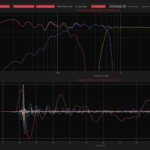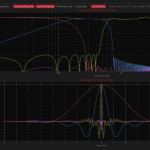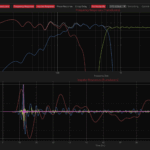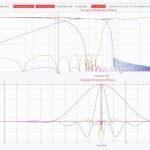Precision FIR Filter Design for Speaker Crossovers and Corrections
LinFIR is a proprietary tool developed by DEM Audio to design linear phase FIR filters for speaker crossovers and frequency response corrections. It offers a streamlined, intuitive interface for audio professionals and enthusiasts alike, making it easy to build advanced filters tailored to your specific loudspeaker system.
Whether you’re designing a high-performance monitor or fine-tuning a home system, LinFIR gives you full control over phase, frequency, and alignment — all with real-time visualization.
€149
Launch price – (excl. VAT)
Available until 31 October 2025. Standard price €219 (excl. VAT) thereafter.
Prices are shown in euros. Final price will be adjusted automatically at checkout based on your location and applicable taxes by Paddle.
What LinFIR Does Best
FIR Crossover Design with Real-Time Feedback
Create FIR-based crossovers and instantly see how they affect your system’s response — frequency, impulse, phase, and group delay — using the actual impulse responses of your speakers.
Precision Speaker Correction
Design FIR correction filters to flatten out driver irregularities or match custom target curves, with live visualization of the result. LinFIR lets you adjust smoothing, apply limits, and fine-tune gain to get exactly the response you want.
Intuitive Time Alignment
Skip the “measure, adjust, remeasure” loop. Adjust delay and gain per transducer and instantly observe how it changes the combined system response. It’s an incredibly fast way to perfect time alignment and optimize summing across crossover regions.
Creative Multi-Driver Configurations
Blend drivers with linear-phase versions of Linkwitz-Riley, Butterworth, and Bessel filters. Need asymmetric slopes? No problem. Want to apply a gentle low-pass to one woofer in a D’Appolito configuration? Easy.
Use this to:
• Compensate rising frequency response from high-efficiency drivers
• Tweak baffle step compensation
• Improve directivity by reducing upper-frequency overlap
Minimum Phase Computation
LinFIR includes a minimum-phase conversion feature based on homomorphic filtering, following the technique described in:
Oppenheim et al., Signal Analysis by Homomorphic Prediction, IEEE TASSP, 1976.
This lets you convert a linear-phase filter into its minimum-phase equivalent, keeping the magnitude response intact while minimizing phase spread — useful for low-latency correction filters or hybrid designs.
Core Features
Design Tools
FIR low-pass, high-pass, and correction filters
Visualization
Frequency, phase, group delay, and impulse response plots
Smoothing
Fractional-octave smoothing for easier response interpretation
Import Impulse Responses
Use actual measurements for accurate filter design
Target Curves
Import custom targets for correction filters
Export Formats
Save filters in binary, CSV, text, or WAV
Cross-Platform
Use LinFIR on a Mac or PC with Windows or Linux
Project Save/Load
Easily store and recall full design sessions
Why We Use Linear Phase FIR Filters in Our Loudspeakers
At DEM Audio, we’re not here to sell you myths, magical components, or marketing fluff. We build loudspeakers the way we think they should be built: with engineering rigor, accurate measurements, and a lot of listening. And at the core of that? Linear phase FIR filtering.
It’s not just a buzzword. It’s a powerful tool that helps us design cleaner, clearer, and more trustworthy speakers — especially compared to traditional IIR filters or passive crossovers. Here’s why it matters:
Supported Export Formats
Binary
CSV (Comma-Separated Values)
Text
WAV (Audio File Format)
LinFIR in action
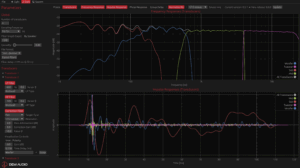

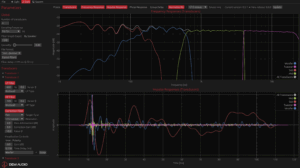
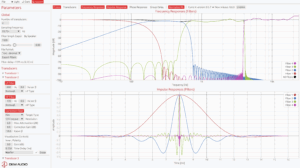
Try It Out
LinFIR is for audio designers who want full control without endless tweaking. It’s made for fast, intelligent workflows. Have questions or want to try it out?




